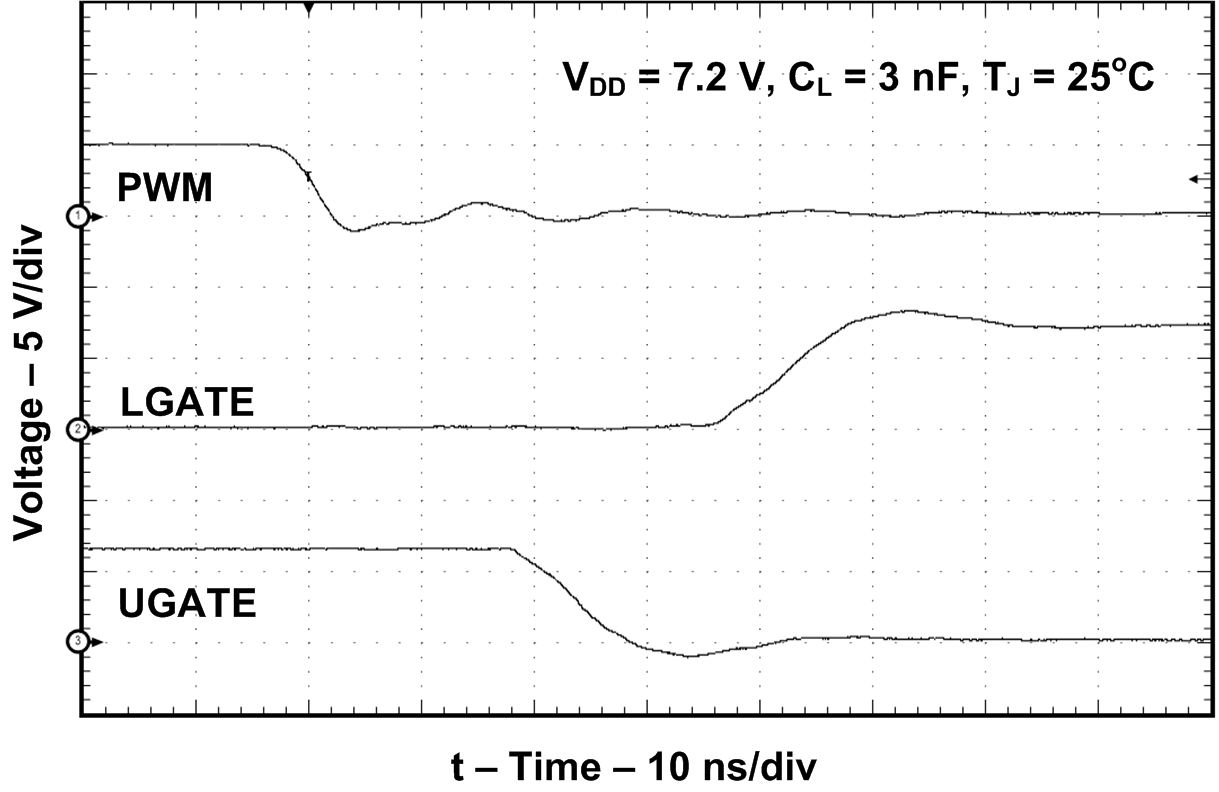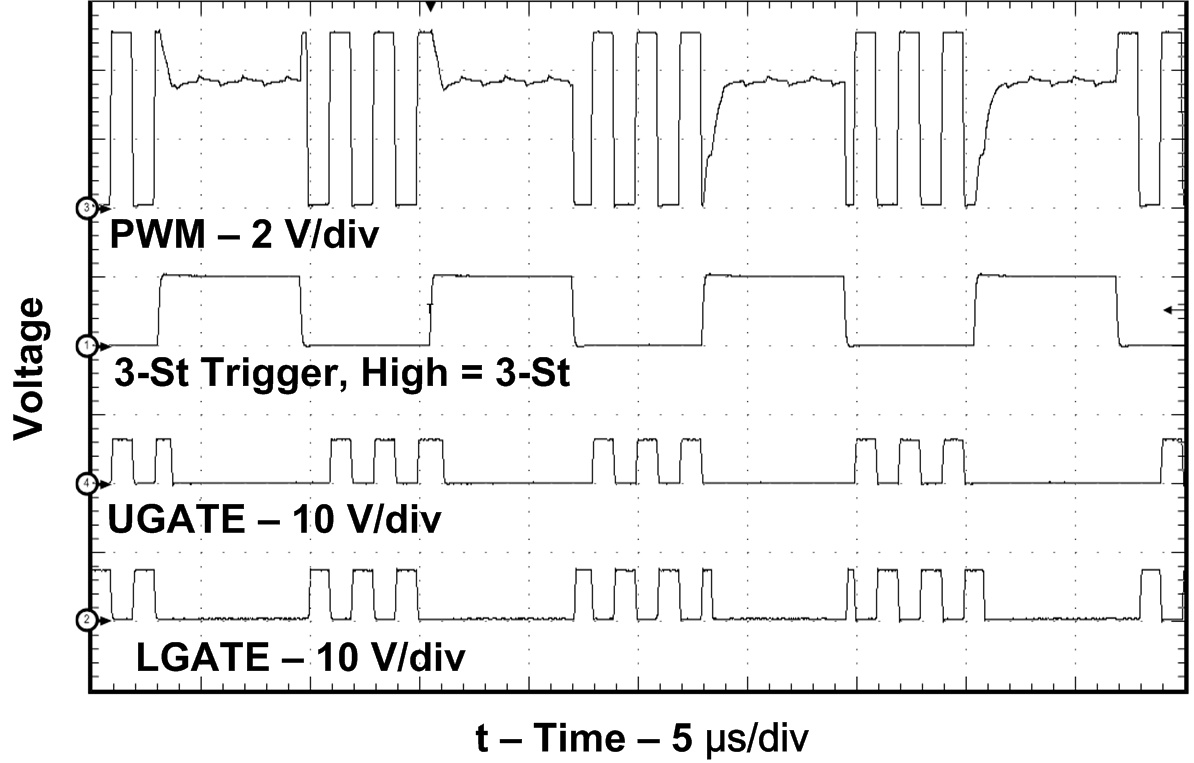SLUS791A July 2007 – September 2015 TPS28226
PRODUCTION DATA.
- 1 Features
- 2 Applications
- 3 Description
- 4 Revision History
- 5 Pin Configuration and Functions
- 6 Specifications
- 7 Detailed Description
- 8 Application and Implementation
- 9 Power Supply Recommendations
- 10Layout
- 11Device and Documentation Support
- 12Mechanical, Packaging, and Orderable Information
Package Options
Mechanical Data (Package|Pins)
Thermal pad, mechanical data (Package|Pins)
- DRB|8
Orderable Information
6 Specifications
6.1 Absolute Maximum Ratings
over operating free-air temperature range (unless otherwise noted)(1)(3)| MIN | MAX | UNIT | ||
|---|---|---|---|---|
| Input supply voltage range, VDD (2) | –0.3 | 8.8 | V | |
| Boot voltage, VBOOT | –0.3 | 33 | V | |
| Phase voltage, VPHASE | DC | –2 | 32 or VBOOT + 0.3 – VDD whichever is less | V |
| Pulse < 400 ns, E = 20 μJ | –7 | 33.1 or VBOOT + 0.3 – VDD whichever is less | V | |
| Input voltage range, VPWM, VEN/PG | –0.3 | 13.2 | V | |
| Output voltage range, VUGATE | VPHASE – 0.3 | VBOOT + 0.3, (VBOOT – VPHASE < 8.8) | V | |
| Pulse < 100 ns, E = 2 μJ | VPHASE – 2 | VBOOT + 0.3, (VBOOT – VPHASE < 8.8) | V | |
| Output voltage range, VLGATE | –0.3 | VDD + 0.3 | V | |
| Pulse < 100 ns, E = 2 μJ | –2 | VDD + 0.3 | V | |
| Continuous total power dissipation | See Thermal Information | |||
| Operating virtual junction temperature range, TJ | –40 | 150 | °C | |
| Operating ambient temperature range, TA | –40 | 125 | °C | |
| Lead temperature (soldering, 10 sec.) | 300 | °C | ||
| Storage temperature, Tstg | –65 | 150 | °C | |
(1) Stresses beyond those listed under Absolute Maximum Ratings may cause permanent damage to the device. These are stress ratings only, which do not imply functional operation of the device at these or any other conditions beyond those indicated under Recommended Operating Conditions. Exposure to absolute-maximum-rated conditions for extended periods may affect device reliability.
(2) All voltages are with respect to GND unless otherwise noted. Currents are positive into, negative out of the specified terminal. Consult Packaging Section of the Data book for thermal limitations and considerations of packages.
(3) These devices are sensitive to electrostatic discharge; follow proper device handling procedures.
6.2 ESD Ratings
| VALUE | UNIT | |||
|---|---|---|---|---|
| V(ESD) | Electrostatic discharge | Human-body model (HBM), per ANSI/ESDA/JEDEC JS-001(1) | ±2000 | V |
| Charged-device model (CDM), per JEDEC specification JESD22-C101(2) | ±500 | V | ||
(1) JEDEC document JEP155 states that 500-V HBM allows safe manufacturing with a standard ESD control process.
(2) JEDEC document JEP157 states that 250-V CDM allows safe manufacturing with a standard ESD control process.
6.3 Recommended Operating Conditions
over operating free-air temperature range (unless otherwise noted)| MIN | NOM | MAX | UNIT | ||
|---|---|---|---|---|---|
| VDD | Input supply voltage | 6.8 | 7.2 | 8 | V |
| VIN | Power input voltage | 3 | 32 V– VDD | V | |
| TJ | Operating junction temperature range | –40 | 125 | °C | |
6.4 Thermal Information
| THERMAL METRIC | TPS28226 | UNIT | ||
|---|---|---|---|---|
| VSON (DRB) | SOIC (D) | |||
| 8 PINS | 8 PINS | |||
| RθJA | Junction-to-ambient thermal resistance | 50.2 | 123.2 | °C/W |
| RθJC(top) | Junction-to-case (top) thermal resistance | 57.5 | 77.0 | °C/W |
| RθJB | Junction-to-board thermal resistance | 25.9 | 63.5 | °C/W |
| ψJT | Junction-to-top characterization parameter | 1.5 | 27.7 | °C/W |
| ψJB | Junction-to-board characterization parameter | 26.0 | 63.0 | °C/W |
| RθJC(bot) | Junction-to-case (bottom) thermal resistance | 9.5 | N/A | °C/W |
6.5 Electrical Characteristics(1)
VDD = 7.2 V, EN/PG pulled up to VDD by 100-kΩ resistor, TA = TJ = –40°C to 125°C (unless otherwise noted)| PARAMETER | TEST CONDITIONS | MIN | TYP | MAX | UNIT | |
|---|---|---|---|---|---|---|
| UNDER VOLTAGE LOCKOUT | ||||||
| Rising threshold | VPWM = 0 V | 6.35 | 6.70 | V | ||
| Falling threshold | VPWM = 0 V | 4.7 | 5.0 | V | ||
| Hysteresis | 1.00 | 1.35 | V | |||
| BIAS CURRENTS | ||||||
| IDD(off) | Bias supply current | VEN/PG = low, PWM pin floating | 350 | μA | ||
| IDD | Bias supply current | VEN/PG = high, PWM pin floating | 500 | μA | ||
| INPUT (PWM) | ||||||
| IPWM | Input current | VPWM = 5 V | 185 | μA | ||
| VPWM = 0 V | –200 | μA | ||||
| PWM 3-state rising threshold(2) | 1.0 | V | ||||
| PWM 3-state falling threshold | VPWM PEAK = 5 V | 3.4 | 3.8 | 4.0 | V | |
| tHLD_R | 3-state shutdown Hold-off time | 250 | ns | |||
| TMIN | PWM minimum pulse to force UGATE pulse | CL = 3 nF at UGATE , VPWM = 5 V | 30 | ns | ||
| ENABLE/POWER GOOD (EN/PG) | ||||||
| Enable high rising threshold | PG FET OFF | 1.7 | 2.1 | V | ||
| Enable low falling threshold | PG FET OFF | 0.8 | 1.0 | V | ||
| Hysteresis | 0.35 | 0.70 | V | |||
| Power good output | VDD = 2.5 V | 0.2 | V | |||
| UPPER GATE DRIVER OUTPUT (UGATE) | ||||||
| Source resistance | 500 mA source current | 1.0 | 2.0 | Ω | ||
| Source current (2) | VUGATE-PHASE = 2.5 V | 2.0 | A | |||
| tRU | Rise time | CL = 3 nF | 10 | ns | ||
| Sink resistance | 500 mA sink current | 1.0 | 2.0 | Ω | ||
| Sink current (2) | VUGATE-PHASE = 2.5 V | 2.0 | A | |||
| tFU | Fall time | CL = 3 nF | 10 | ns | ||
| LOWER GATE DRIVER OUTPUT (LGATE) | ||||||
| Source resistance | 500 mA source current | 1.0 | 2.0 | Ω | ||
| Source current(2) | VLGATE = 2.5 V | 2.0 | A | |||
| tRL | Rise time(2) | CL = 3 nF | 10 | ns | ||
| Sink resistance | 500 mA sink current | 0.4 | 1.0 | Ω | ||
| Sink current(2) | VLGATE = 2.5 V | 4.0 | A | |||
| Fall time(2) | CL = 3 nF | 5 | ns | |||
| BOOTSTRAP DIODE | ||||||
| VF | Forward voltage | Forward bias current 100 mA | 1.0 | V | ||
| THERMAL SHUTDOWN | ||||||
| Rising threshold(2) | 150 | 160 | 170 | °C | ||
| Falling threshold(2) | 130 | 140 | 150 | °C | ||
| Hysteresis | 20 | °C | ||||
(1) Typical values for TA = 25°C
(2) Not production tested.
6.6 Switching Characteristics
over operating free-air temperature range (unless otherwise noted)| PARAMETER | TEST CONDITIONS | MIN | TYP | MAX | UNIT | |
|---|---|---|---|---|---|---|
| SWITCHING TIME | ||||||
| tDLU | UGATE turn-off propagation Delay | CL = 3 nF | 14 | ns | ||
| tDLL | LGATE turn-off propagation Delay | CL = 3 nF | 14 | ns | ||
| tDTU | Dead time LGATE turn off to UGATE turn on | CL = 3 nF | 14 | ns | ||
| tDTL | Dead time UGATE turn off to LGATE turn on | CL = 3 nF | 14 | ns | ||
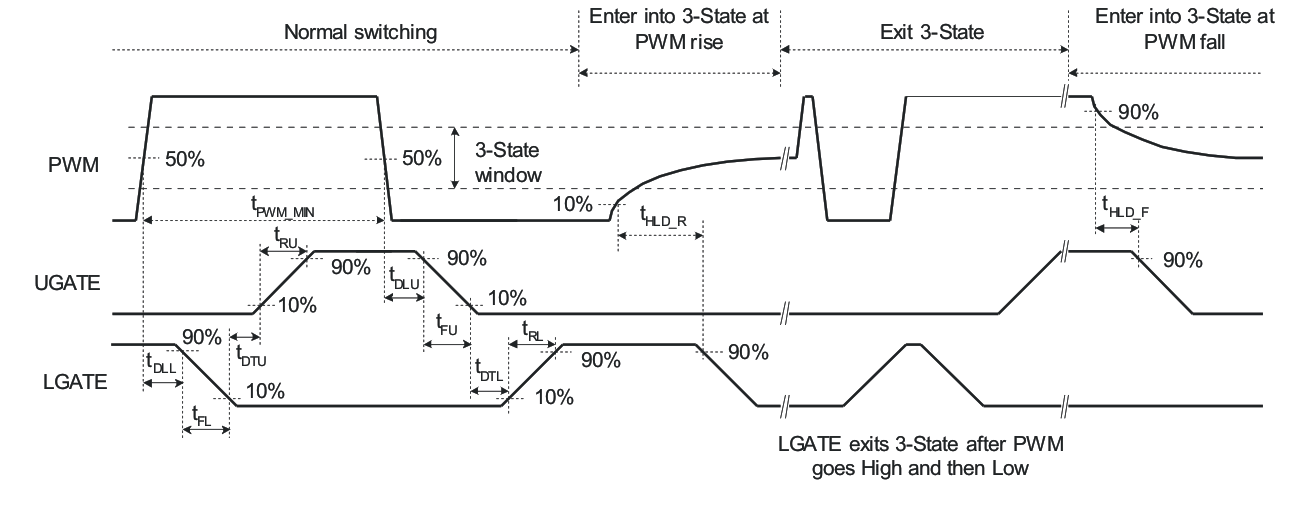 Figure 1. TPS28226 Timing Diagram
Figure 1. TPS28226 Timing Diagram
6.7 Typical Characteristics
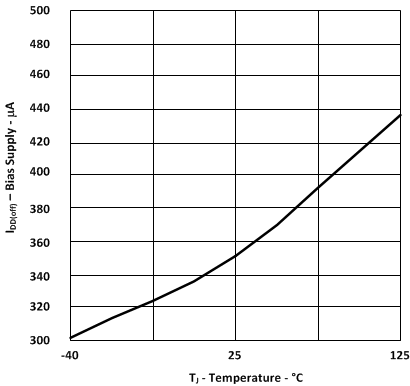
| VEN/PG = Low | PWM Input Floating | VDD = 7.2 V |
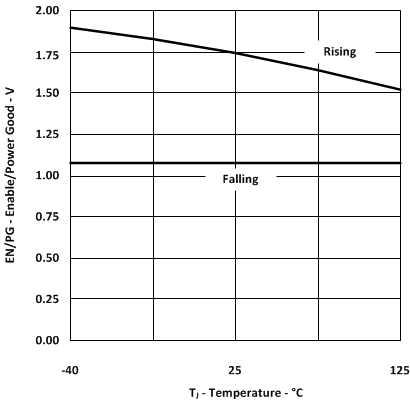
| VDD = 7.2 V |
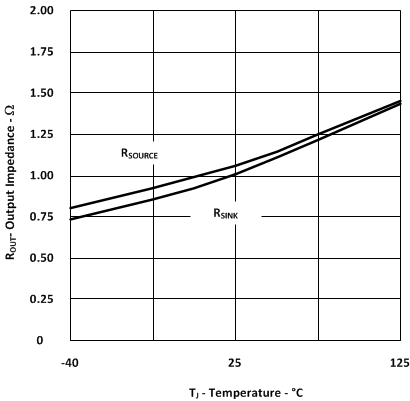
| VDD = 7.2 V |
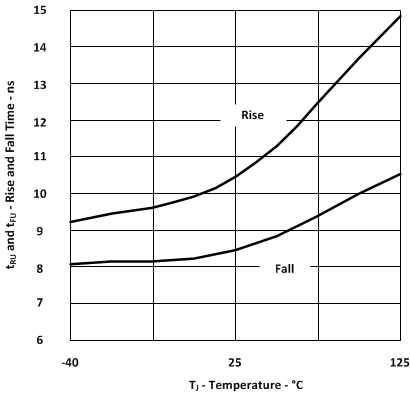
| VDD = 7.2 V | CLOAD = 3 nF |
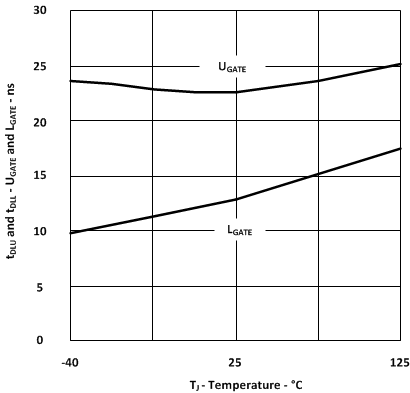
| VDD = 7.2 V | CLOAD = 3 nF |
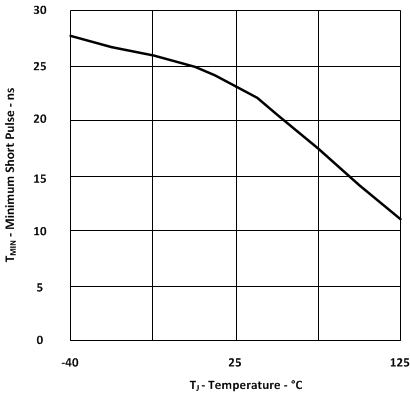
| VDD = 7.2 V | CLOAD = 3 nF |
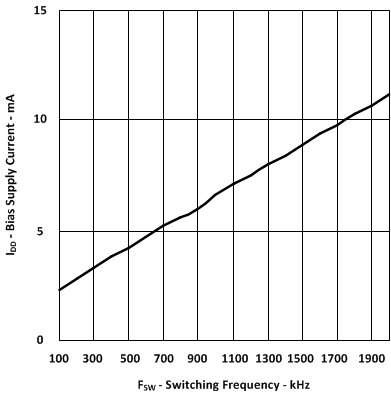
| No Load | VDD = 7.2 V | TJ = 25°C |
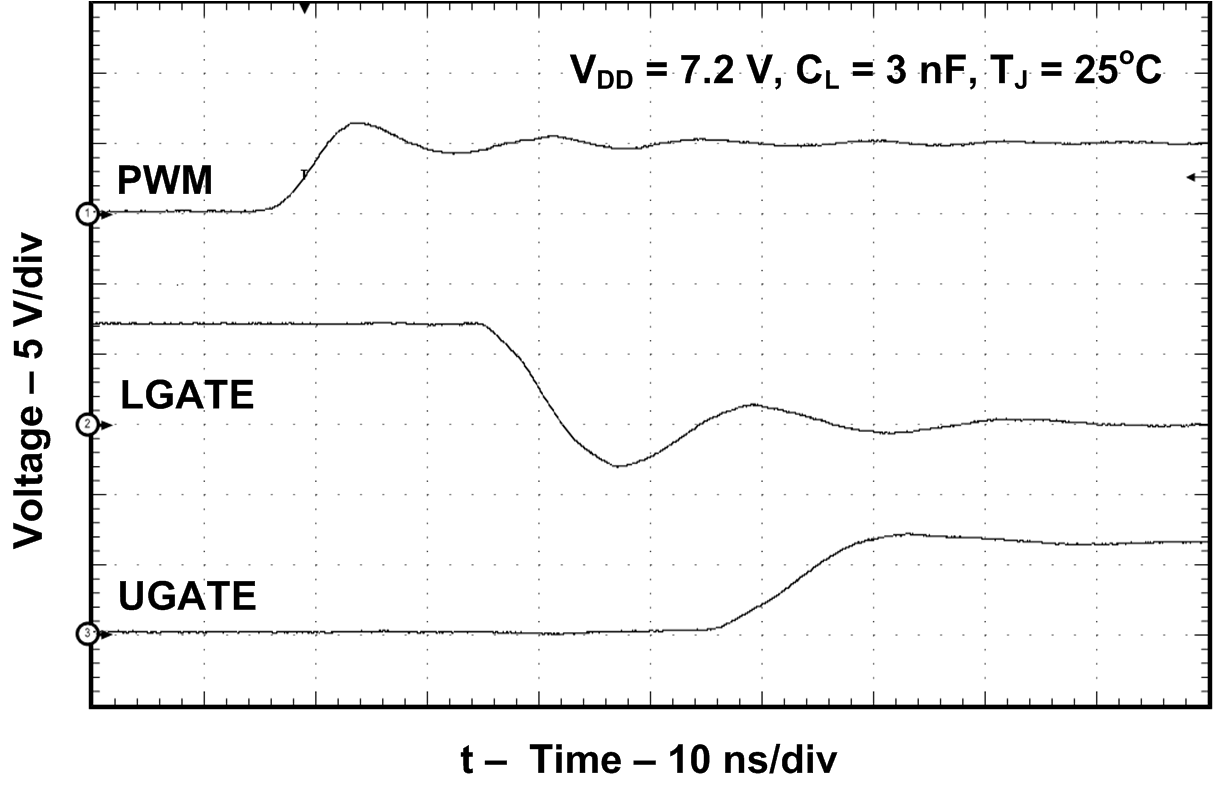
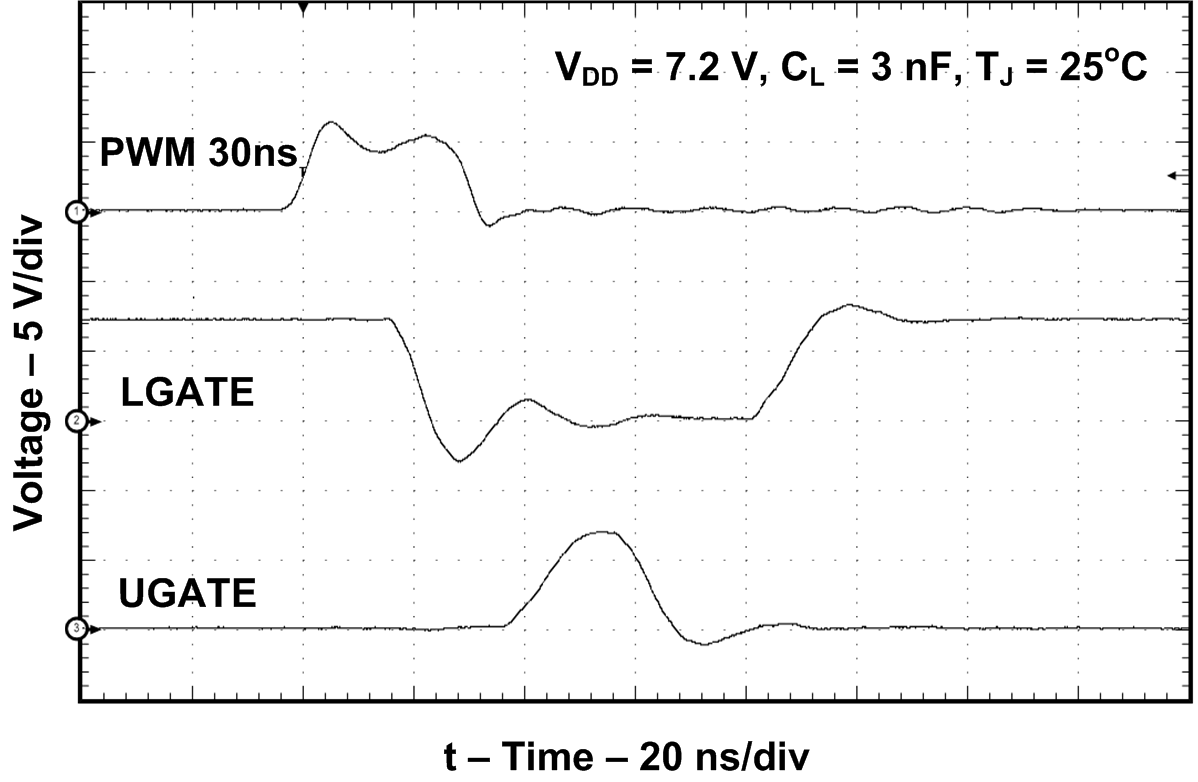
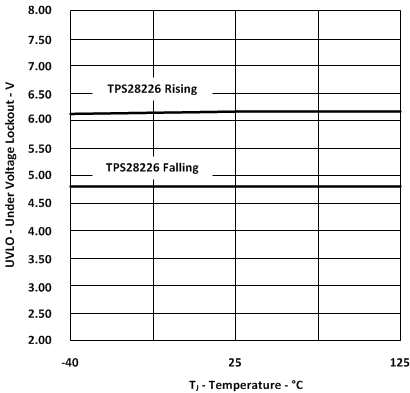
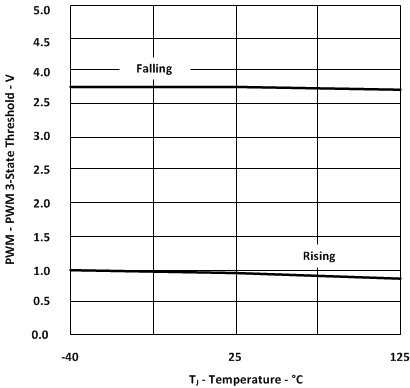
| VDD = 7.2 V |
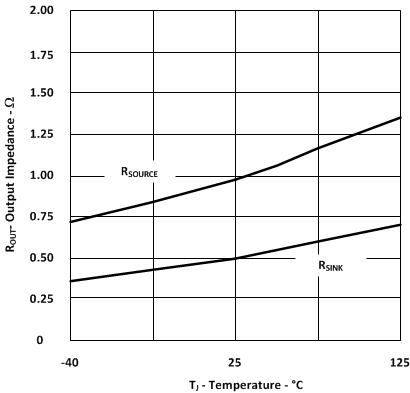
| VDD = 7.2 V |
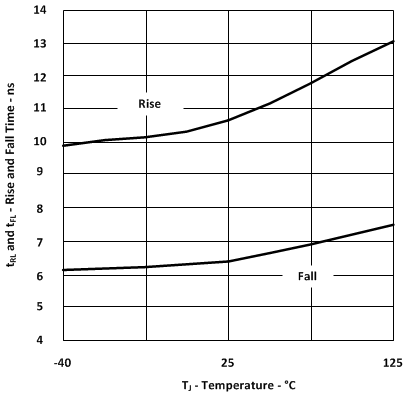
| VDD = 7.2 V | CLOAD = 3 nF |
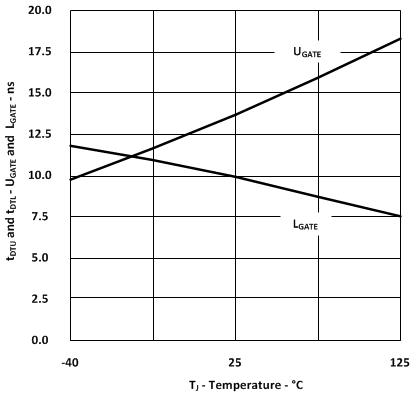
| VDD = 7.2 V | CLOAD = 3 nF |
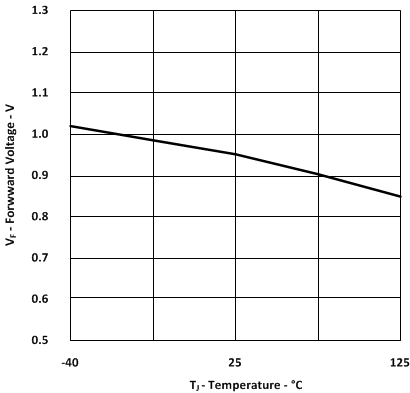
| VDD = 7.2 V | IF = 100 mA |
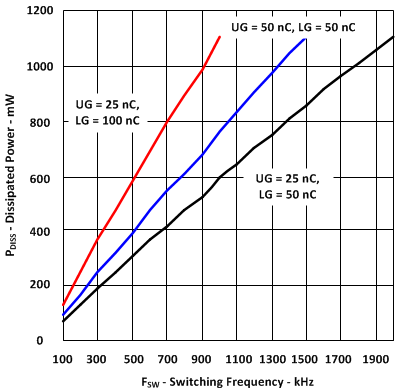
| Different Load Charge | VDD = 7.2 V | TJ = 25°C |
